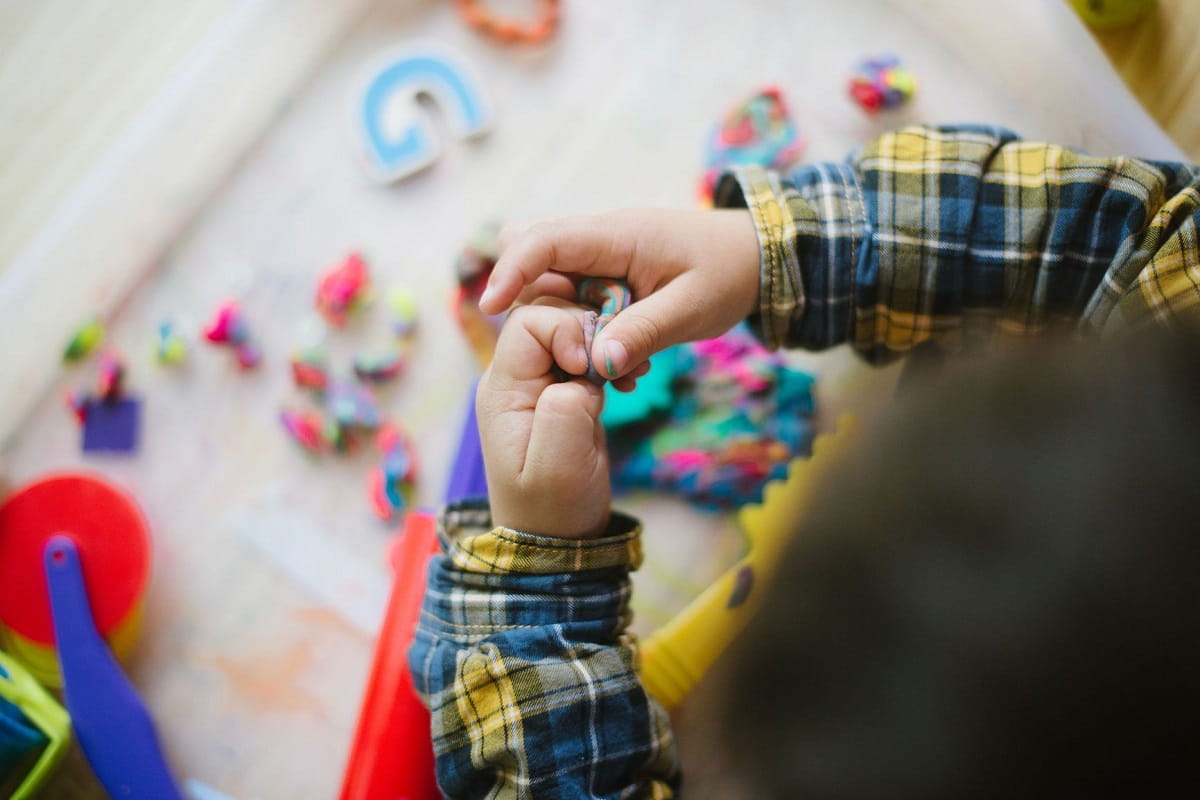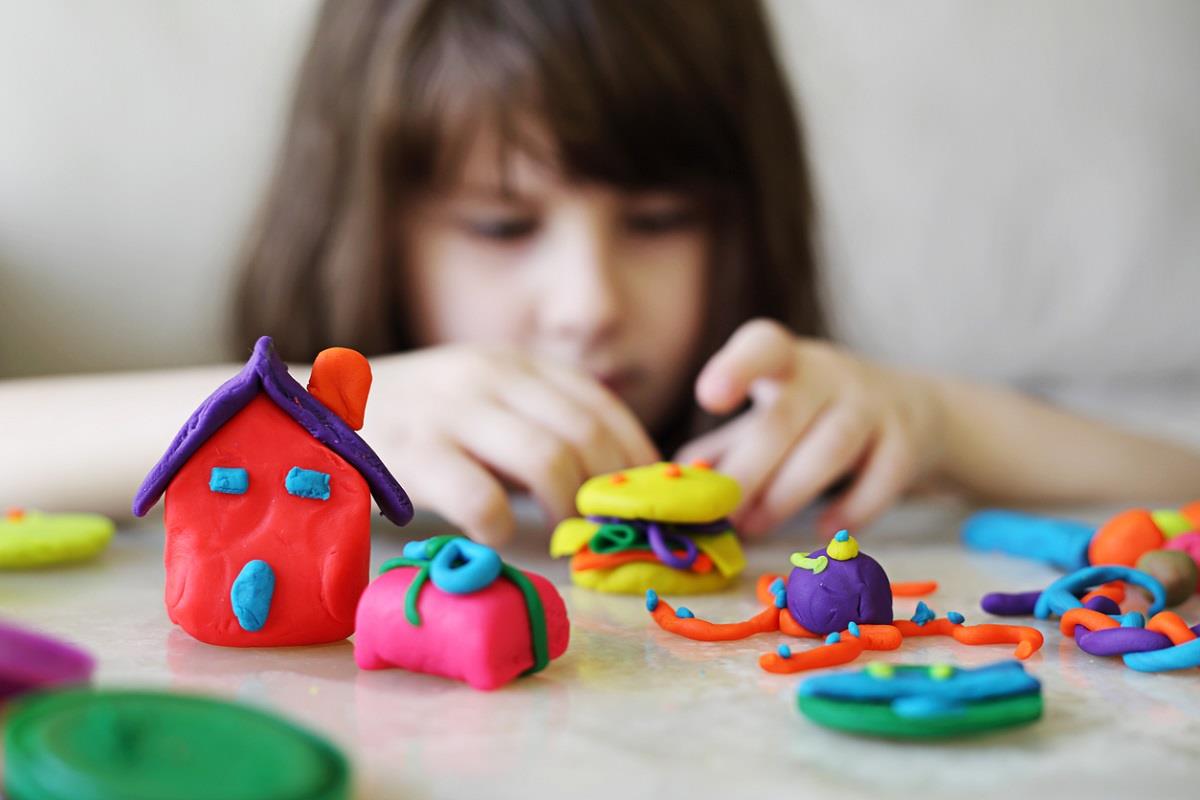What Will They Create? Play Dough Activities Build Kids' Imaginations!

By Rachel Ward
Bend it, squeeze it, pull it, and mold it! Play dough activities have proven themselves over time to be kid-favorites.
There’s a good reason why kids go nuts for play dough—and it’s because they can be as rough and tough on it as their little hearts desire. (And some kids are natural-born artistes who just take to clay and dough from day one!)
Here at KinderCare, we toss play dough into our lessons every now and then—especially for the preschool set.
“Activities involving play dough and play-dough tools allow children to be creative and to experiment, but also to practice the small-muscle skills they’ll need for other things later on, like writing,” says Meg Davis of KinderCare’s Education team.
Play Dough Art Activities Build Creative Expression—and Beyond
What can they make from a ball of play dough? There are no limits or strings attached as we hand over different colors of dough, rolling pins, and cookie cutters in all shapes and sizes (think stars, triangles, circles, and squares).

As kids roll out the dough and use the cookie cutters to cut out small cakes of dough, we encourage them to think about and name the shapes they’re using. But if they’d rather create a giraffe or a house, we let them make their play-dough dreams a reality!
“Children are using their imaginations here, which frequently leads to more complex pretend play that helps them think about and even work through what they’ve observed from the world around them,” explains Davis. “Our teachers extend the learning by asking open-ended questions, like ‘How did you make all of those spots on the snakes?’ or ‘What shapes are you making?”
We’re building small-muscle skills and imaginations every day here at KinderCare, and there are lots of fun ways you can do the same at home! Check out our tips below.
Dream Big! 4 Imagination-Building Learning Activities to Try at Home
1. Make a painting—without a paintbrush.
Q-tips, rubber bands, cotton balls, branches, and leaves—whatever you have available, hand it over to your preschooler, pour some paint on a paper plate, and let them create! Using small items like this will build small-muscle skills while letting your child explore their imagination and the spirit of innovation.
2. Make a mix-matched photo collage.
Grab some old photos that you don’t really care about and some child-size scissors. Have your child cut the photos up however they want, and then create an all-new picture using the bits and pieces!
3. Craft a miniature world.
Gather together some mini accessories (aquarium add-ins like tiny treasure chests, toy people, or even a sunken ship are awesome for this one) and a fun texture like sand or soil. Grab a clear, plastic bowl, and let your child create their own tiny world. (Need more tips? We’ve got a great how-to guide for creating a fairy garden.)
4. Get creative with beads and pipe cleaners.
What can your little artist create with just beads and pipe cleaners? Stringing beads onto pipe cleaners builds those ever-important fine-motor skills, and you might be surprised by what your child dreams up—from a colorful spider to a picket fence!




